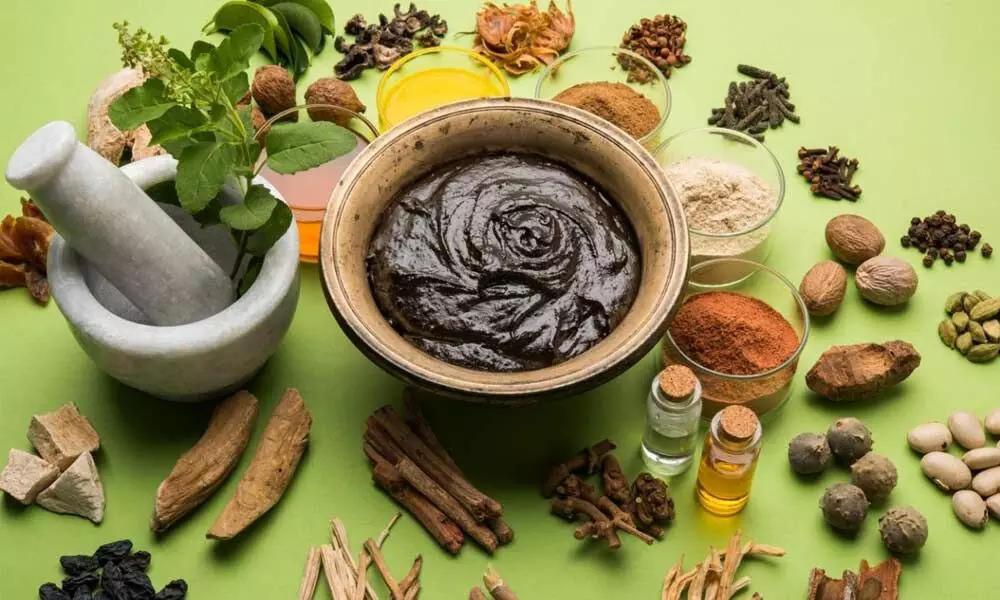Live
- Holi Festival: Liquor Outlets to Remain Closed for Holi in Hyderabad
- iQoo launches Neo 10R model
- Hyderabad: Woman Alleges Caste-Based Harassment by Roommates in Shaikpet
- Markets end on flat note
- Nifty Metal index falls after US tariffs
- AP minister clarifies on TIDCO houses, says all the issues will be addressed
- Uppal Stadium Preps for IPL with Rs 5 Crore Renovation
- Sebi speeds up rights issue process
- Ladhani Group to invest Rs 11K cr over 5 yrs
- Moody’s forecasts higher GDP growth in FY26
Go back to basics to adjust with seasonal changes


Go back to basics to adjust with seasonal changes
Sleeping during the day, overexposure to sunlight is best avoided
To adjust to the seasonal changes one needs to go back to basics and give heed to the concept of Rituacharya, an ancient Ayurvedic practice that derives its connotation from two words 'Ritu' meaning season ( 6 seasons) and 'Charya' meaning a regimen or a discipline. The practice of Rituacharya basically teaches one to acclimatise his lifestyle to the seasonal transitions that are experienced by physiology due to the changes that take place in the environment that surrounds him.
This process usually takes 14 days, a phase when the current seasonal effect starts feigning and a new season starts setting in. It then becomes extremely crucial for one to cope with the biological and mental impact that this phase of approximately 14 days that affects one's overall wellbeing.
As per the teachings of Ayurveda, each of us embodies a dominant natural constitution comprised of: either Vata, Pitta, or Kapha (or a combination of any of the two constitutions). Vata constitution is comprised of the qualities of air and space, Pitta by fire and water, and Kapha type body by water and earth. Each season pacifies or ignites these energies within us, meaning that our system can get imbalanced, if we do not take the right measure to adapt our bodies to the changing weather conditions.
For example, during the monsoon season as we are currently experiencing, the sky is cloudy and it rains. The strength of the body decreases during this season and Vata dosha starts to become prominent as Pitta dosha is slowly accumulated. The digestive Agni is also dampened by the waters.
Diet recommendations: Inclusion of sour, salty and oily (unctuous) foods are best for this time. Among cereals, one should consume old barley, rice, wheat, etc. Meat soup, Yusha (soup), etc. are ideal to provide warmth to the body. As waterborne diseases are prevalent now, it is advised to take medicated or boiled water.
One must consume churned preparations that are high in water content. Vata-oriented foods are drying and best for this season. At this time, one must not consume foods that are heavy and hard to digest, like meat, etc.
Lifestyle: Only use boiled water for the bath to avoid skin infections. Massage the body with warm oil after bath. Actions to avoid are getting wet in the rain, sexual indulgence, heavy exercise and sleeping during the day.
Likewise, during the autumn or Sharad, the earth (mud) is moist and the Sun shines brightly in a clear sky which may sometimes have white clouds. Strength returns to medium, while the Pitta dosha accumulated in the rains starts to melt in the Sun. Digestive Agni starts to get rekindled.
Diet recommendations: Sweet, bitter and astringent are the tastes to favour during this season. Foods that are cold and light to digest are best during this part of the year. Pitta-pacifying foods should be consumed now. Wheat, green gram, sugar candy, honey, Patola (Trichosanthes dioxide), the flesh of animals of dry land (Jangala Mamsa) are great dietary choices for this season.

© 2025 Hyderabad Media House Limited/The Hans India. All rights reserved. Powered by hocalwire.com






